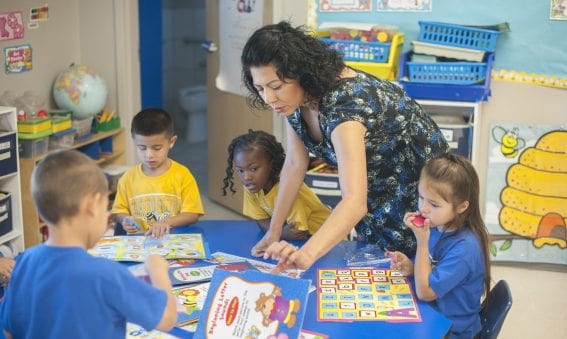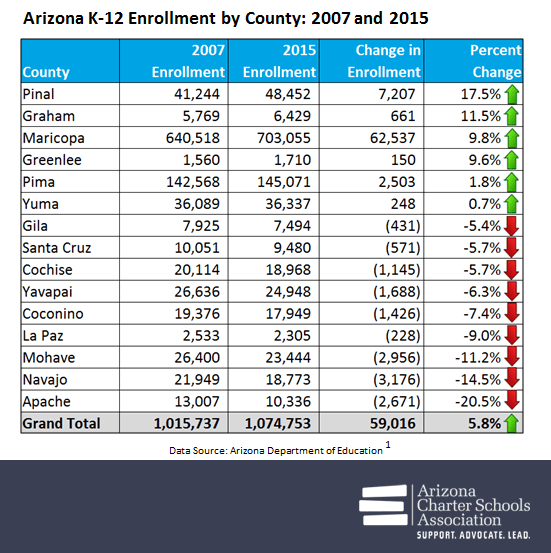The Association’s first look at statewide enrollment trends over the last nine years shows that despite the overall growth in K-12 enrollment, nine of the fifteen counties in the state have seen an overall decline in student enrollment.
Perhaps not surprisingly, Maricopa County saw the greatest increase in the number of students, adding 62,537 students. In terms of percent change, Pinal County outpaced Maricopa County, increasing by 17.5%, or 7,207 students. Two of the state’s smallest counties, Graham County and Greenlee, also top the list of percent growth at 11.5% and 9.6% respectively.
When we consider the “percent change” column of the above table with a geographical lens, we get a clearer picture of Arizona’s enrollment patterns. The map below shows that the largest enrollment declines are occurring in the northern part of the state, with Cochise and Santa Cruz counties being the exceptions to this trend:
The implications of such enrollment trends are not insignificant. Statewide comparisons, independent of county-specific analyses, paint a positive, growing K-12 environment. As the overall population of students in the state increases, so does our overall K-12 budget allocated from the state’s general fund. However, simply evaluating statewide trends provides an incomplete picture of student enrollment trends that may result in ineffective policy decisions. Evaluating these data by county is pivotal in understanding how enrollment has changed across our state. For example, the declining enrollments in rural counties result in declining school and district budgets, making it even more difficult to find qualified teachers in these counties. Also, as enrollment increases in Maricopa and Pinal Counties, the demand for school facilities will grow while at the same time buildings in Northern Arizona become underutilized.
It is clear from these data that student enrollment patterns vary significantly by county and this will likely complicate future discussions regarding budget, facilities and access to high quality schools. Arizona’s education policy discussions should not assume enrollment growth is occurring statewide. Instead, policymakers would benefit from reviewing differing enrollment patterns across different parts of the state and consider the impact on proposed policies.




